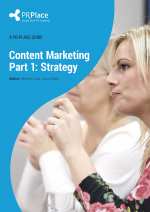How to Develop a Content Marketing Strategy
A PR Place guide
In content marketing, a larger, engaged audience translates into more web traffic, more interest, and a greater number of leads.
Download: Guide to Content Marketing Part 1: Strategy
The guide will help you to:
- Get a return on your investment for your content marketing
- Map your customer journey
- Set up tools and systems for successful content marketing

We respect your privacy and handle your data with care. Please see our privacy policy.
Thank you for downloading your free guide. Your download should start immediately. We are adding new guides all the time, so check back regularly.
If you asked us to keep you up to date with new guides and the latest industry insights, you will receive an email shortly asking you to verify the address we need to send them to.


